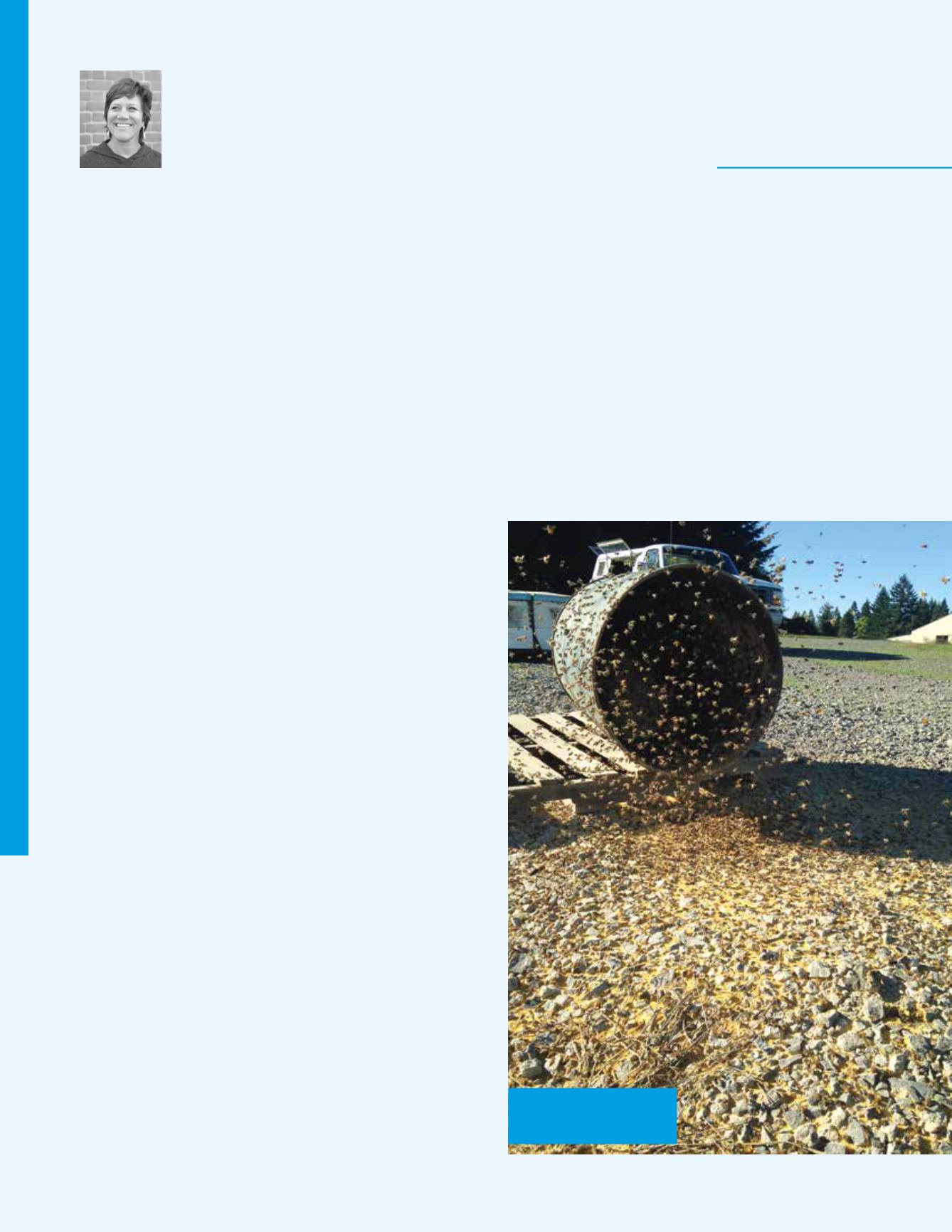
30
Almond Facts
MAY | JUNE 2017
IN YOUR ORCHARD
The Bee Box
KAREN RENNICH, Executive Director, Bee Informed Partnership
What Happens
to the Bees After
Almonds?
With half of the roughly 2.6 million honey
bee colonies in the U.S. moving into almonds
in January and February, not many almond
customers stop to think about where all those
bees come from. And because a lot of the loading
happens at night, not many think about where
the bees go after or what they do for the rest of
the year other than make honey.
Because we have the unique opportunity to work with so
many commercial beekeepers in five regions of the U.S.,
we are particularly aware of how much work it takes to
get those colonies ready for pollination and the effort it
takes to get them to the next stop, be it home or a southern
wintering location, or the next pollination contract.
As a quick snapshot of the next drop for some of these
operations, here are the short stories of what is next for
these hard-working operations and colonies.
California
As colonies are released from the almond orchards after
pollination, they are probably as big as they will be the
entire year. They have been fed protein patties in January
to get the queens laying and populations built up in
preparation for the bloom. After consuming the high
protein almond pollen and increasing the population even
more, something needs to be done to prevent swarming,
especially in the larger colonies. Many of the beekeepers
in Northern California don’t ship their colonies to summer
honey locations until later, so they are kept in holding yards,
preferably in places with natural forage such as mustard.
This is also the season for producing packages and queens,
so these huge colonies are perfect for shaking bulk bees
make and sell packages. This sets the colonies back a bit
and discourages swarming. Other beekeepers will typically
make splits and put in new queens at this time. Finally,
most beekeepers will want to test for mites after almonds,
especially those that haven’t treated since the previous year.
Pacific Northwest
(Oregon, Idaho,Washington)
Colonies return to cold rainy Oregon after almonds. They
sit in holding yards until the beekeepers get a call from
their growers about the start dates for pollination of the
next crop. The big crops following almonds are highbush
blueberries and cherries, but there’s also turnip, cabbage,
mustard, crimson clover, pear, and meadowfoam in bloom
in April or May. With the long bouts of bad weather,
beekeepers feed heavily when they’re sitting in the holding
yards. They’re also equalizing, making nucs to sell, and
grading colonies for pollination.
Dry pollen feeding in a holding
yard. (Photo Courtesy of the
Bee Informed Partnership)


